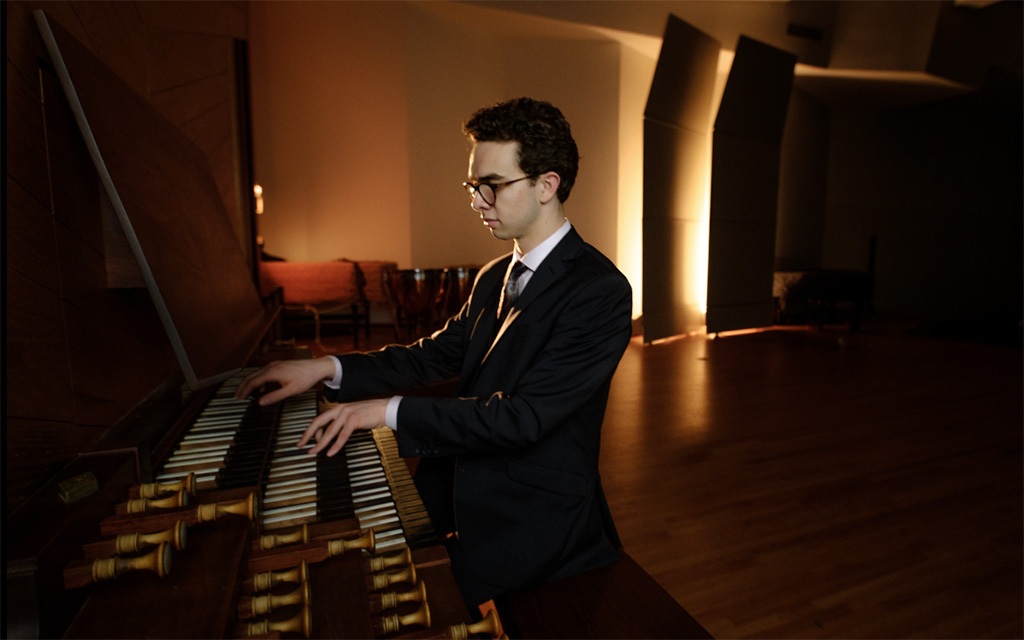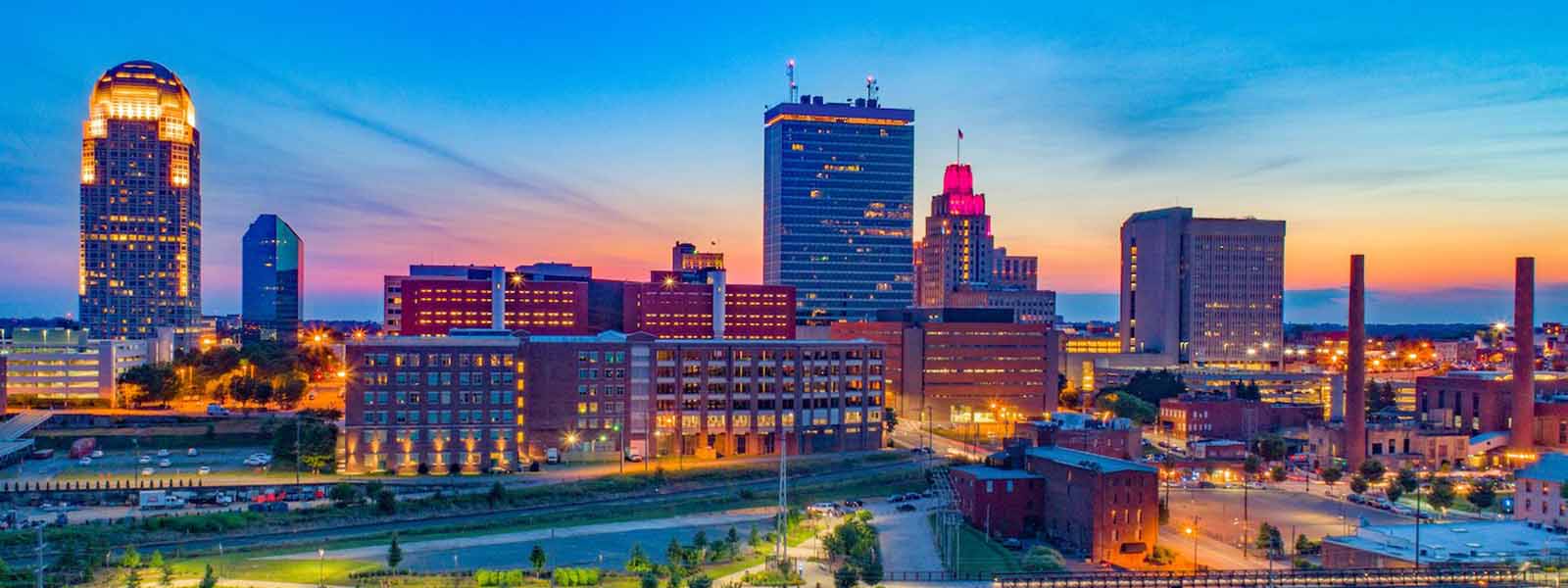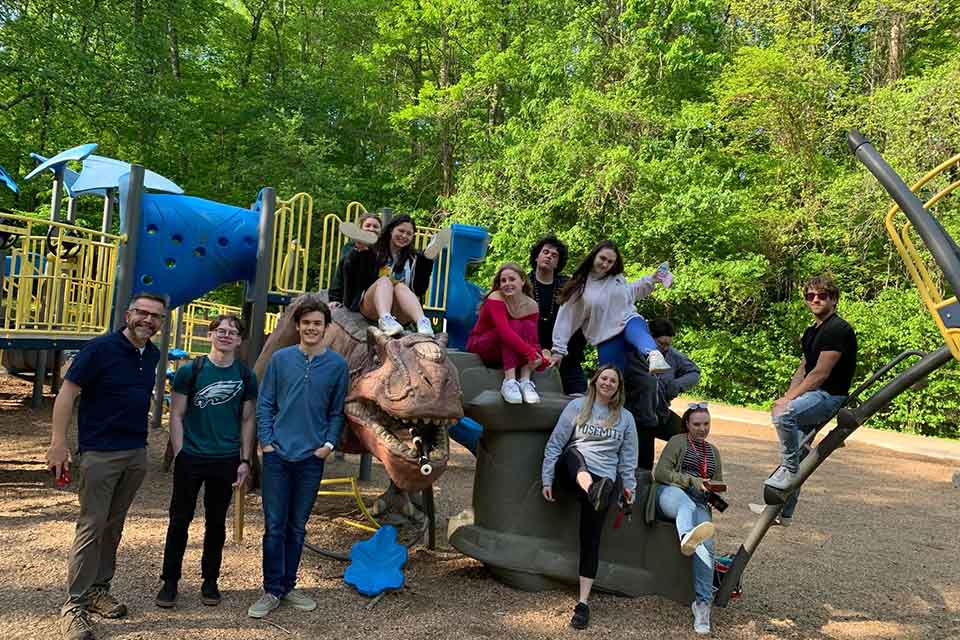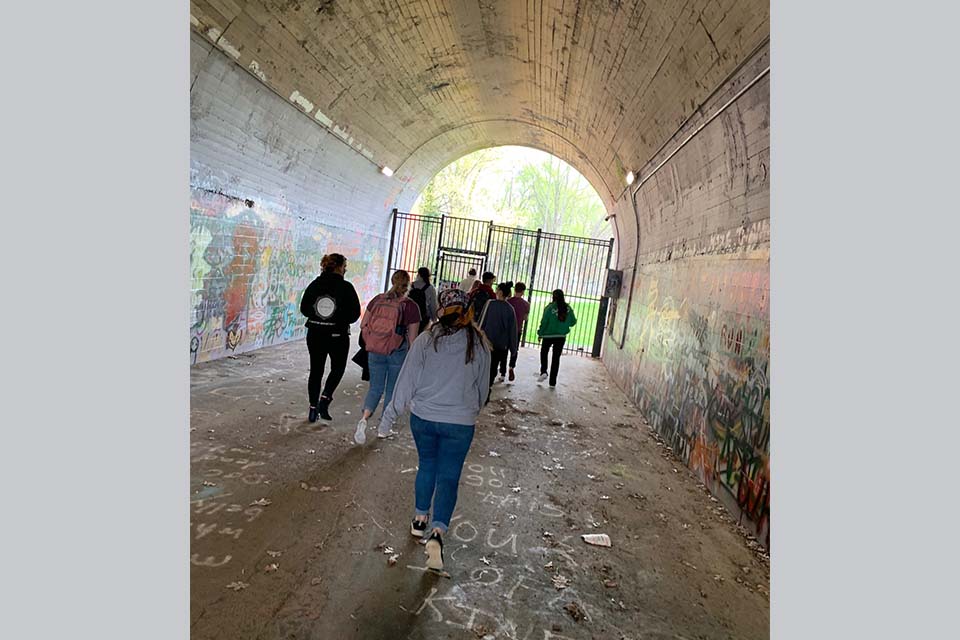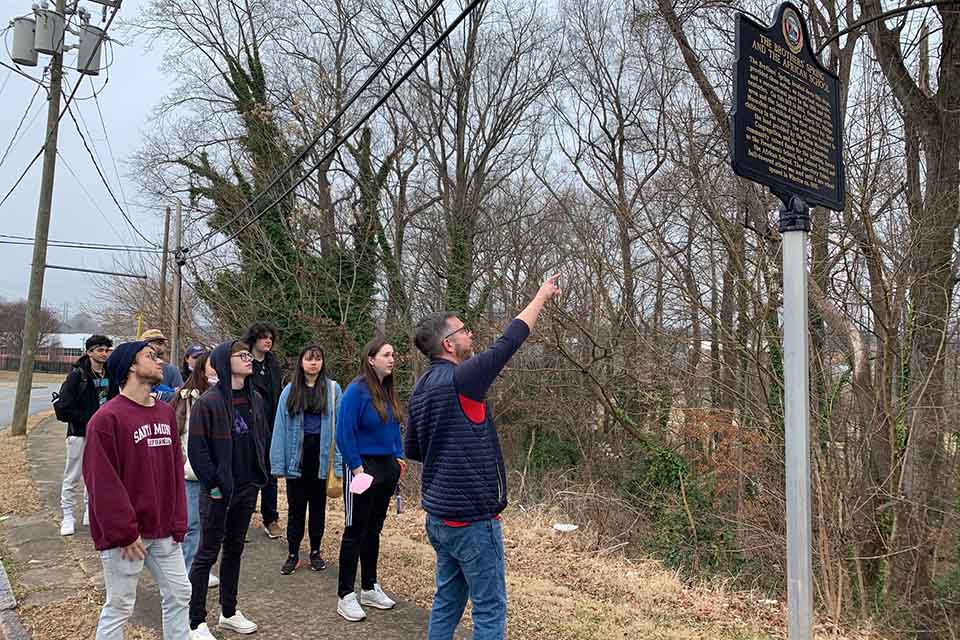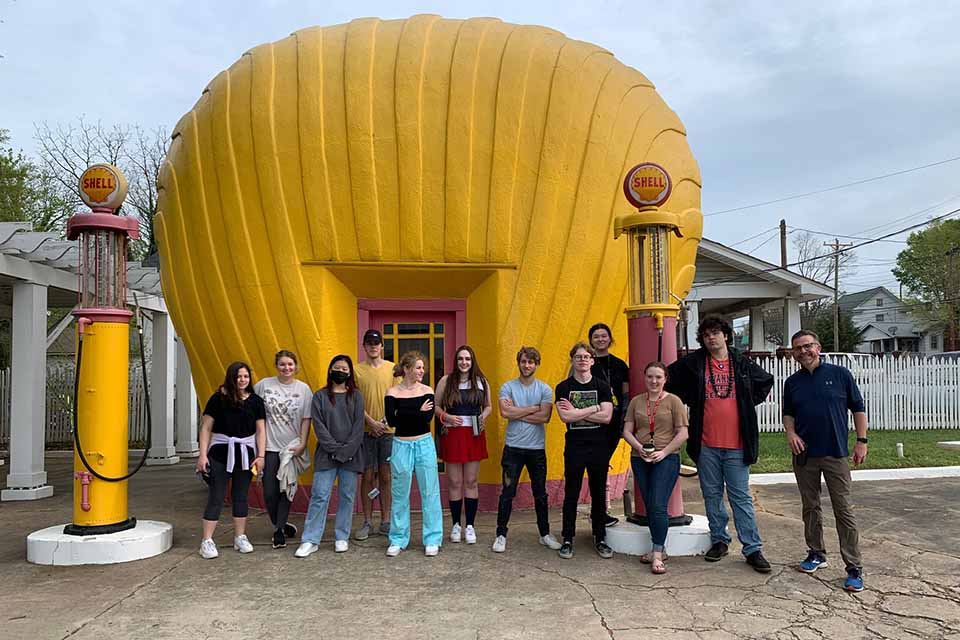Students find a lot to love in Winston-Salem
Every August, hundreds of aspiring artists follow their dreams to Winston-Salem, the City of Arts and Innovation. Many of them probably know little about the city beyond the fact that it is home to UNCSA, the renowned conservatory where they will hone their skills and fuel their creativity. They might not be aware of the city’s abundant resources for culture, entertainment and recreation, and its promise of inspiration for creative minds that yearn to tell stories through their artistic expression or artforms.
“For many of our students the city is a new, unfamiliar place,” said Joseph Mills, a professor of writing and humanities in the Division of Liberal Arts. “And sometimes they can quickly fall into a cycle of dorm, studio, classroom, cafeteria, dorm, literally never leaving campus. So to simply walk to Washington Park with its dinosaur playground or along the Strollway can be refreshing and even revelatory for them. Many have a stereotype of what a ‘small town’ Winston-Salem is, but they come to realize it has a rich, multi-faceted history.”
In a rut? Take a walk.
Mills and his colleague Michael Wakeford, who teaches history and humanities, offer an elective course designed to break the typical student routine by taking weekly walks to points of interest and inspiration. Wakeford says throughout history artists and philosophers have gathered inspiration and imagery by walking and observing. “Every time you take a walk you are creating a story,” he said. “Our campus is in the middle of an interesting city. It’s the perfect setting for artists to find their muse and discover their stories.”
Back in the classroom, the students discuss and write about the places they’ve seen, making connections to the city’s history and its current challenges with social justice, equity, inclusive community design, and environmental sustainability. “These are issues the students care deeply about, and issues that will inform the stories they tell as artists,” Wakeford said.
Mills, who has published seven volumes of poetry, said, “I’m often asked where I get my ideas, and I say: ‘Walk around the block and you’ll get a half dozen.’ There are stories and history all around; you just have to go slow and look for them.”
On a course evaluation, a student said the course “changed the way I see my surroundings and my view of Winston-Salem as a community. I can’t say that I saw the town as other than a passing-through point in my journey. However, through our walks around the city, I felt more included in the community, and the history we talked about helped to root the value of Winston to me on a personal level.”
Like many students, Erin Edge (Dance H.S. ’97) found her own way around the city and came to appreciate it so much that after dancing professionally and teaching dance, she returned to raise her family in the City of Arts and Innovation. “Winston-Salem has a wonderful community of artists of all kinds, both within the UNCSA community and in the city at large. It was (and is!) very inspiring to be in a city that welcomes and supports artists of all kinds,” said Edge, who now administers the artpreneur grant program at UNCSA, among others.
“One of the things I love about Winston-Salem is that it’s a large enough city that there’s always something to do, but also small enough that it’s very easy to navigate and live here,” Edge added.
Cameron MacManus (PAC Music ’11) , director of the UNCSA Community Music School, says the cost of living is a major advantage that drew him to Winston-Salem for postgraduate studies. “I didn’t want to live in a large metropolitan area, and this felt like home,” he said. “There are opportunities to do the things you want to do as a musician, and a community of established professional musicians that are willing to lend a hand.”
Where to go and what to see
Not every student can take Humanities 2918: Walking Practitioners and Practices, but they can still explore Winston-Salem. The following is curated list of recommendations from Edge, Mills and Wakeford.
Old Salem, just a stone’s throw down Main Street, is one of America’s most comprehensive historic
sites, telling the stories of Moravian, Black, and Indigenous peoples in the American
South. “My friends and I always enjoyed walking from campus down to Old Salem to get
a treat or see the historic buildings,” Edge said. The village, with museums, shops,
a restaurant and open green space, is also a favorite of Mills.
Reynolda Gardens offers abundant acres to stroll and inviting places to plop down on a blanket to
read. More than a century old, the 134-acre landscape is part of the original footprint
of the Reynolda estate, the country home of tobacco baron R.J. Reynolds. “Just enjoy
the beauty of it and consider the history of the Reynolds family and Wake Forest University,”
Wakeford said Reynolda also offers Reynolda Village Shops and Restaurants and Reynolda House Museum of American Art.
Downtown Winston-Salem is a great place to explore. “Unlike so many towns, Winston-Salem has managed to
keep its downtown alive,” Mills said. “So, you can take a nice urban walk along Fourth
Street from Hanes Park or the West End past the Reynolds Building, the prototype for
the Empire State Building.”. Edge appreciates downtown for its “galleries, theaters,
a great art house cinema, a fantastic independent bookstore, coffee shops and restaurants.”
Innovation Quarter on the north end of downtown is a diverse mixed-use community and arts ecosystem designed
to spark creativity and collaboration, set against a vintage urban industrial backdrop.
The community is anchored by Bailey Park, a 1.6-acre oasis that hosts concerts, food truck events and regular outdoor yoga
classes, all surrounded by sculptures and murals. Running the length of Innovation
Quarter is Long Branch Trail, a 1.7-mile paved trail for biking and walking. Long Branch Trail runs into the Salem Creek Greenway, giving users access to a 20-mile loop from the north end of Innovation Quarter to
Salem Lake and back. Long Branch Trail encompasses an abandoned railway bed that historically
separated East Winston and its predominantly Black residents from downtown, where
they earned their living, Wakeford says.
“Innovation Quarter and Bailey Park illustrate a radical transformation of the Reynolds Tobacco facilities into one of the most fun and dynamic portions of the city,” he added.
Southeastern Center for Contemporary Art is another favorite of Edge and her classmates. SECCA offers a front-row seat to
the art of our time through exhibitions, experiences and education programs with a
focus on regional working artists. An affiliate of the North Carolina Museum of Art,
SECCA offers unique, large-scale indoor and outdoor settings for exploring the intersections
of contemporary art and culture.
Pick a park. “Winston-Salem has almost 80 city parks, and there are benches in all of them,”
Mills said. Salem Lake is one of his favorites, with a seven-mile trail for walking, running or biking,
plus fishing, boating and places to relax and picnic.
Vintage Shell Station on Sprague Street is a must for students, says Wakeford. Built in the 1930s by Quality
Oil Company, a Winston-Salem-based marketer of Shell Oil, the shell-shaped gas station
is “a straight-line walk from campus that illustrates how big this city is, in a great
way,” Wakeford said. “You will hear languages and see Latinx businesses and will discover
how a city with deep history is changing in a big way.”
More Winston-Salem resources
- The Downtown Winston-Salem Partnershipmaintains a calendar of events and a downloadable map and directory of restaurants, shops, theaters, galleries and other entertainment venues.
- Subscribe to Smitty’s Notes, a one-stop website and newsletter filled with everything that’s happening in the city.
- Visit @thegotowinstonsalem or @bestofwinston on Instagram.
- Check out concerts, plays and speakers series at other college campuses in town, including Salem College, Wake Forest University and Winston-Salem State University.
Get the best news, performance and alumni stories from UNCSA.
SUBSCRIBE TO OUR NEWSLETTERS(OPENS IN NEW TAB)
August 12, 2022





